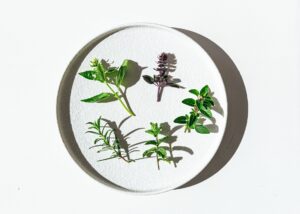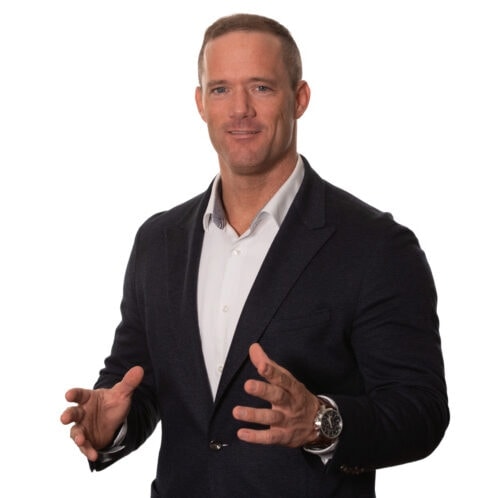Estrogen deficiency unlikely
An estrogen deficiency is extremely rare! What many do not know: estrogens can be produced in almost every cell in our body. The body can basically produce estrogen from testosterone through an enzyme called aromatase. This makes it difficult to get into an estrogen deficiency even for a woman without ovaries. This is because the amount of estrogens that can be produced in the tissue is adjusted to the amount of estrogens that the ovaries would have produced if necessary.
Hormonal problems – a modern nuisance
Note that humans should have a body temperature of 37 degrees Celsius (or even a little higher, in women at least during ovulation). Nowadays this temperature is only reached by children. Cellulite, a sign of hormonal imbalance and acidity, was not known even in overweight people in the first half of the 20th century. Food intolerance was also extremely rare.
Xenoestrogens and Testosterone
You know by now that the state of men in the Western world looks bad: A meta-analysis that included 7500 studies found that sperm counts of men from Western countries have halved in the last 40 years. It is currently falling 1.4% every year. Testosterone levels also drop annually. A 30-year-old man in the 1960s had much higher testosterone levels than a 30-year-old man today.
Every fourth man over 30 now suffers from a testosterone deficiency
At the same time, we are seeing an increase in men with obesity, cardiovascular disease and depression. No accident when you consider that low testosterone is a common risk factor for these problems.
So the trend is clear: downwards
There is much speculation about the causes of this development. In this context, the Soyboy meme was also born. Because soy contains plant-based estrogen, which is suspected of having a feminizing effect and thus favoring this negative development.
But soy is by no means the only problem, nor is it the biggest one.
Xenoestrogens and endocrine disruptors are rarely discussed, even if they interfere with the hormonal system much more than soy. (Admittedly, Xenoestrogen-Boy sounds less memorable than Soyboy. If you can think of something crisp to spread the word, let me know.)
The most notorious (and dangerous) xenoestrogens are:
- BPA : It is widely used in plastics manufacturing and is one of the most commonly produced chemicals. In the body, it acts like a hormone, lowering testosterone and causing erectile dysfunction. (Sources)
- Phthalates : These are the so-called “plasticizers”. They make plastic malleable and are plasticizers in the truest sense of the word, because they lower testosterone. They are also used as stabilizers for numerous care products.
- Parabens : They are used in almost all types of cosmetic products: sun creams, lotions, shower gel, shampoo, lubricant gel, toothpaste, shaving foam … Parabens are xenoestrogens that attach to the estrogen receptors and thus lower testosterone and increase estrogen. Items labeled with chemicals that end in ethyl, methyl, butyl, or propyl contain parabens.
- Benzophenones (BP-1, BP-2, BP-3 …): These chemicals are mainly found in sun creams. They are strongly suspected of reducing the activity of enzymes that are required for testosterone production. This has been proven for BP1-3. They are now also classified as “possibly carcinogenic”.
- Triclosan and Triclocarban : These are the active ingredients that are traditionally used in disinfectants. But they not only kill bacteria, they also block testosterone production in the testicles. Triclosan was banned in the EU, but is still widely used outside Europe in antibacterial soaps and sprays, toothpaste, children’s toys, shaving gel and deodorants.
- Polychlorinated Biphenyls (PCBs) : These chemicals, too, were banned a long time ago after it was discovered that they had a catastrophic impact on health. But it wasn’t expected how persistent they are. Traces can be found in numerous products, but especially in fish and fish oil from contaminated areas. PCB continues to lower testosterone and has strong anti-androgenic effects.
- Pretty much all pesticides : 30 out of 37 pesticides tested are endocrine disruptors. That is, they intervene negatively in the hormonal system. Many suppress testosterone by destroying important enzymes in the testicles, others have estrogen-like effects and are therefore similar to xenoestrogens. Pesticides can largely be avoided by buying organic.
I hope that makes the topic a little more tangible for you. But let’s get in and take a look behind the scenes:
Studies on Xenoestrogens
a) This study looked at men who work in chemical plants that make BPA. They had significantly lower testosterone levels than men who were employed in a hydropower plant. In particular, the free testosterone was reduced in them.
b) A study of 568 girls in Saudi Arabia found that the use of plastic bottles and plastic children’s toys correlated with early puberty.
c) Boys are also affected. In this study, the mothers of 196 boys were examined for their phthalate levels during pregnancy. Testosterone levels were (indirectly) determined 21 months after the birth to check whether phthalates had an effect on the child during pregnancy. The result was clear: the higher the mother’s phthalates, the lower her boy’s testosterone levels.
d) BPA not only lowers testosterone and can cause erectile dysfunction, but also suppresses the enzyme 5-alpha reductase. This converts testosterone into its much more potent form, dihydrotestsoterone. In women, it can promote breast cancer because BPA appears to be able to convert healthy cells into cancer cells. It also interferes with the genes that fight cancer.
e) When researchers examined water from plastic bottles of 18 different brands, they found 11 to have “estrogenic activity”.
f) And it gets worse. In a study, 445 common household plastic products were tested for “estrogenic activity”. This could be proven in 70%. This also includes products that were sold as “BPA-free”. When the products were exposed to normal conditions, i.e. heated in the microwave or washed in the dishwasher, the proportion of those with estrogenic effects rose to 95%.
G) Xenoestrogens have a very long “half-life”. Many take 25-100 years to break down. As a result, their effect remains active for a longer period of time. In addition, chemicals can enter our body in a number of ways: By ingestion, inhalation, or even through the skin.
Again, it is best to avoid these chemicals altogether as much as possible. If you eliminate the worst mistakes and gradually integrate new products or habits into your everyday life, then you are on the right track. No need to despair.
So we finally come to the crucial question:
How can you avoid xenoestrogens?
As already announced, it will take some new habits and products.
Here is the (non-exhaustive) list. I know that’s a lot all at once, but I still advise you to do as much as you can. If you can’t, at least stick to the critical points I’ve highlighted.
Food:
- Eat mostly unprocessed and unpackaged foods. Cans also contain BPA and tomato sauce in particular absorbs the chemicals. A good alternative is to freeze vegetables instead of buying them cans.
- Buy organic as often as possible. Organic food is treated less or not at all with chemical pesticides. In particular, the tip applies to the “dirty dozen” . That is 12 fruits that are most heavily contaminated with pesticides. Peel fruits and vegetables that are not organic.
- Dairy products and meat from factory farming are full to the brim with xenoestrogens and hormones. It is precisely here that you should be careful to buy high quality products. Ideally from grass-grazed animals.
- To save money on these more expensive organic products, it is advisable to eat out less often. In most restaurants, efficiency is paramount and the issue of xenoestrogens is unknown. That is why food is stored, heated and prepared in plastic regardless of (hormonal) losses.
- When you cook at your place use wooden or metal cookware instead of plastic
- The Teflon pan should also be replaced by one made of stainless steel or titanium
- Don’t use a plastic kettle, and your coffee shouldn’t be brewed by a plastic machine . When the plastic is heated, the chemicals and xenoestrogens mix particularly well with the water. This turns the morning cup of coffee or tea into a chemical cocktail. I can tell you a lot about it because I’ve handled it this way for years and haven’t gotten good results with it. Use a glass kettle or boil your water in a pot and use a French press for your coffee.
- Eat cruciferous vegetables like broccoli, cauliflower, Brussels sprouts, kale, etc. They contain a natural ingredient called indole-3-carbinol. It is known to drain excess estrogen. Alternatively, you can buy the active ingredient as a supplement.
Plastic:
- It probably doesn’t surprise you anymore that conventional plastic is a health disaster. It cannot be avoided everywhere, but the worst mistakes are surprisingly easy to solve with this rule of thumb: Anything you eat or drink shouldn’t come in contact with plastic. When it comes to your food, look for an alternative to plastic: Don’t keep your food in plastic containers or drink water from plastic bottles; instead, get alternatives made of glass, metal, or ceramic.
- If you absolutely can’t do without plastic, then avoid heating it at all costs . Do not eat food that has been warmed up in plastic bowls or drink drinks from plastic bottles that have been exposed to the sun. The heat makes your food absorb the chemicals particularly well. This is one of the worst things you can do to your health.
- Don’t buy water from plastic bottles anymore, but get a water filter that filters fluoride from your crane water. Unfortunately, I haven’t found any that aren’t made of plastic, but at least there are some without BPA, even if that’s not an insurance that it is completely harmless. If you want to get really serious, then a reverse osmosis filtration system is for you.
- Products labeled as “BPA-free” should also be avoided. Because instead of BPA, other chemicals are used that have not been adequately researched.
- Swap out your shower curtain for one that doesn’t contain PVC
Care products and cosmetics:
- For most, this is where it becomes particularly critical. Because almost all conventional care products and cosmetics contain xenoestrogens. Now go to your bathroom and throw away everything that has -paraben, ethyl, methyl, butyl, or propyl among the ingredients.
- Get a deodorant that is based on natural ingredients or discover your inner hippie and make your own deodorant
- Do not use normal soap and certainly not a conventional disinfectant. Do it like grandma and buy the classic block of additive-free curd soap
- Use less perfume or spray it on your clothes instead of your skin. Alternatively, you can also try eco brands without parabens or phthalates
- Even conventional detergents are usually full of xenoestrogens. Fortunately, there are more natural variants. If you can, skip the tumble dryer too
- Sunscreen in particular contains the list of ingredients for a complete undergraduate degree in chemistry. Make sure to use natural sunscreen or, if you are very insensitive, you can also try coconut oil (SPF 4-5).
Miscellaneous:
- Whenever possible, do not accept receipts and reduce your contact with thermal paper (tickets, bills, etc.) in general. This contains dubious amounts of BPA and thermal paper is directly related to increased BPA levels in the urine.
- Use a handkerchief when refueling, because xenoestrogens are also dissolved in gasoline
I know this looks very overwhelming to you at first. Start with the basics: replace your coffee machine, your kettle and everyday care products such as deodorant, shampoo and shower gel. Throw away plastic cans and bottles and most importantly: Do not heat food in plastic . Use metal containers and bottles instead.
With these steps you already reduce the majority of the xenoestrogen exposure and you can get away with it cheaply.
Then you can “fine tune” piece by piece. Save this article and keep checking back to make minor adjustments.
Even if you can only make small changes, it is still more than nothing to do.
conclusion
With the “modern lifestyle”, in addition to the endless advantages, we have also included some traps in our everyday life that did not exist in the past. Including xenoestrogens. They are hiding everywhere and it is only slowly becoming clear how much they harm us.
Male health in particular suffers from these chemicals and it is no coincidence that testosterone levels have fallen rapidly along with sperm counts in recent years, while exposure to xenoestrogens continues to increase.
If you liked the article, share it with your friends to make them aware of the problem too. Only when more people know about the topic and make other consumption decisions will companies also change their processes and products.







